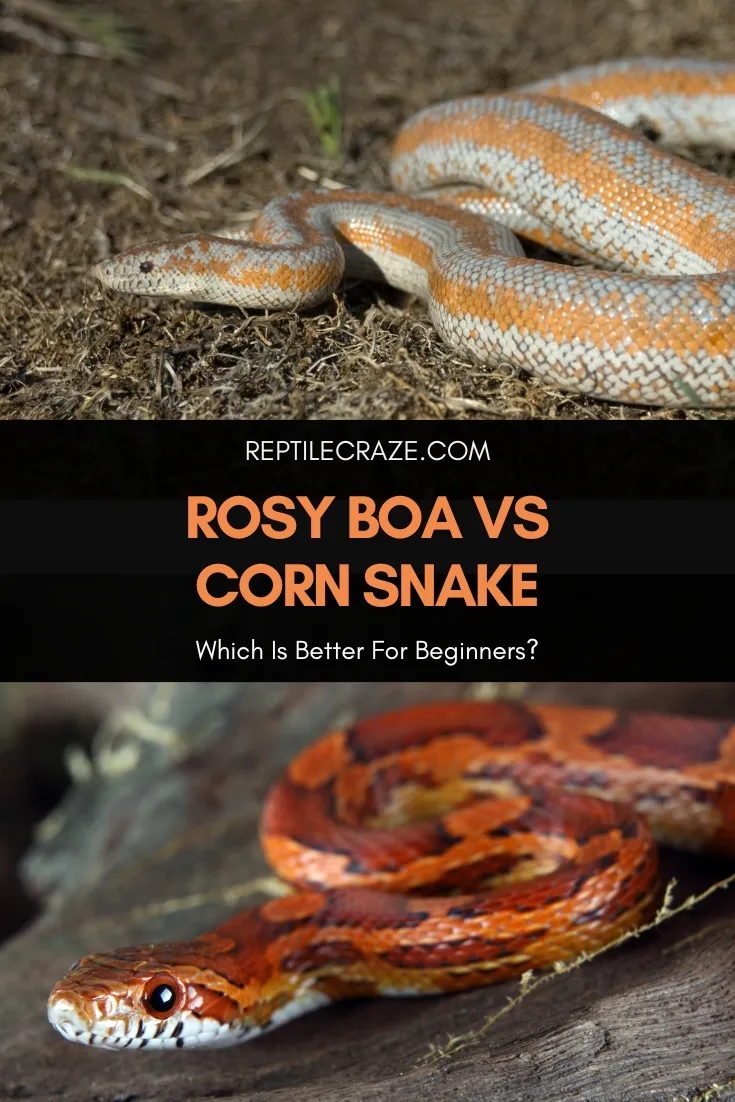
For most reptile enthusiasts, the first pet will always be special. Rosy boas and corn snakes are popular choices among first-timers. But for a beginner reptile enthusiast who has many factors to consider, it can be difficult to decide between the two.
Rosy boas and corn snakes are both great beginner-friendly reptiles. Rosy boas are perfect for enthusiasts who have limited space and prefer handling shorter, thicker-bodied snakes. Corn snakes are suitable for those who enjoy their wide variety of color morphs and longer, slender bodies.
The better choice may vary even more depending on other factors and preferences. This article provides a rundown of the similarities and differences between the rosy boa and corn snake, as well as some details to consider before getting your first snake.
Table of Contents
Rosy Boa vs. Corn Snake: At A Glance
| Comparisons | Rosy Boa | Corn Snake |
|---|---|---|
| Lifespan | 18-30+ years | 10-20+ years |
| Physical Characteristics (adults) | 2 – 3 feet long Thick-bodied Variety of color patterns | 4 – 6 feet long Slender-bodied >800 kinds of color morphs |
| Husbandry Requirements | Require a 20-Gallon 65 to 90°F thermal gradient | Require a 40-Gallon 70 to 85°F thermal gradient |
| Nature of Defense | Rolls up into a compact ball with head in the center Releases foul-smelling musk from its tail | Hissing Tail shaking or rattling Striking Musking or defecating |
| Common diseases | Inclusion body disease Adenovirus disease Bacterial and fungal infection Parasites | Retrovirus disease Bacterial and fungal infection Parasites |
The Similarities Between Corn Snakes And Rosy Boas
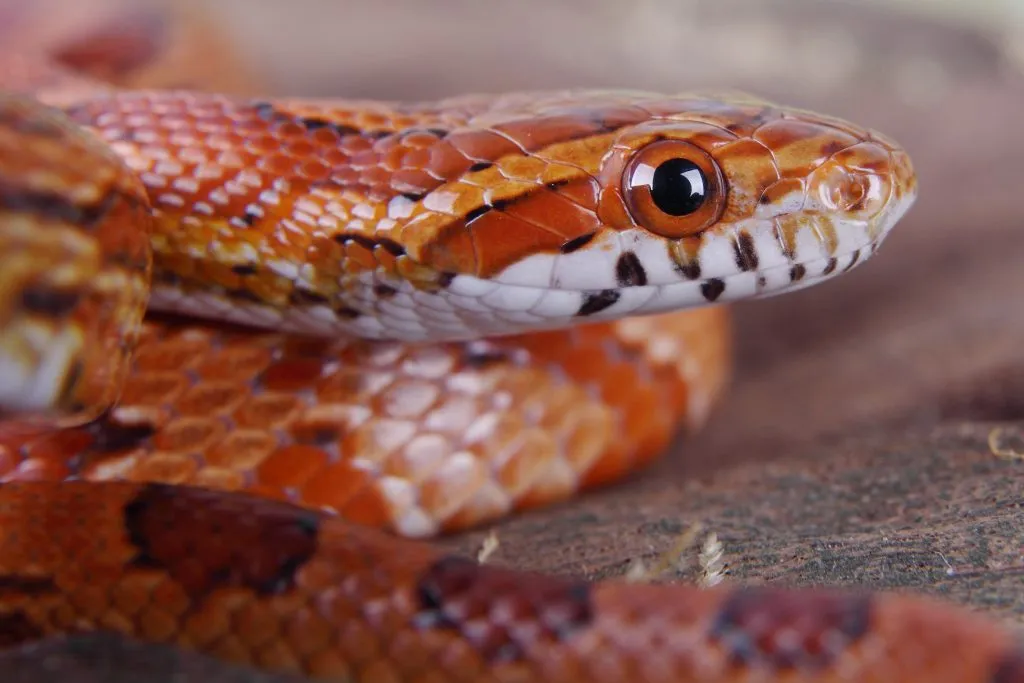
Diet
Rosy boas and corn snakes share a lot of similarities, one of them being their diet. Both snakes are carnivorous reptiles that are mainly feed on mice in captivity.
As adults, they require being fed only once every 7 to 10 days, making them very convenient pets.
Temperament
In terms of temperament, rosy boas and corn snakes share more commonalities than you would think. They are both docile, gentle creatures that rarely bite and are quite easy to handle.
These are the major reasons why they both make great beginner-friendly pets.
Things to Watch Out For
Rosy boas and corn snakes are both professional escape artists. They love to rub their noses against the enclosure surfaces to find a way out of even the smallest gaps.
As such, it is very important to ensure that their habitat is escape-proof.
Both snakes get easily stressed when they are unable to burrow or hide in their
Thus, a good substrate that is soft, dry, and absorbent should be provided at a sufficient depth (1 to 2 inches) that allows burrowing. Aspen shavings are a great choice for both snakes.
It can be tempting to start out with several snakes under your care, but rosy boas and corn snakes should generally be housed alone.
Rosy Boa vs. Corn Snake: Differences
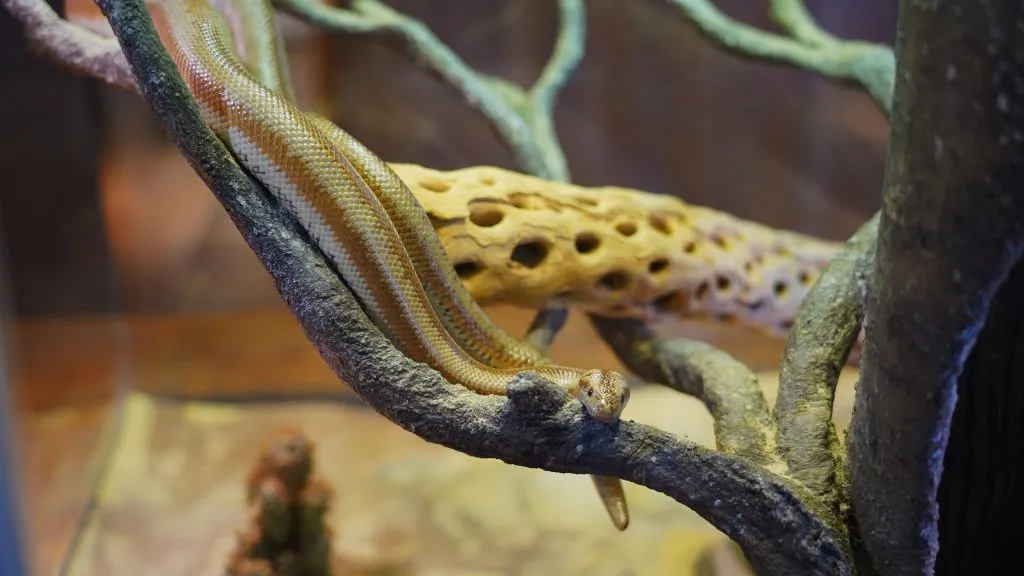
Physical Characteristics
Let’s see how they differ in looks first before we go over behavior and husbandry requirements.
Rosy Boa: The Low-Maintenance Beauty
Rosy boas are calm, beautiful snakes with stunning colors that can be combinations of red, orange, yellow, or brown.
Adult rosy boas grow up to 2 or 3 feet and thus would require at least a 20-Gallon
Corn Snake: The Popular Colorful Morphs
Corn snakes come in a variety of color morphs, making them visually appealing.
They are very popular among private breeders who love crossing snakes of various patterns and colors to produce unique new patterns. It is suggested that there are now over 800 unique color morphs of corn snakes.
Adult corn snakes are slender but can grow much longer than rosy boas, reaching 4 to 6 feet long. Thus, they require a larger enclosure than rosy boas.
A regular adult requires at least a 40-Gallon tank, so ensure that you have enough space in your home for a setup suitable for a corn snake.
Lifespan
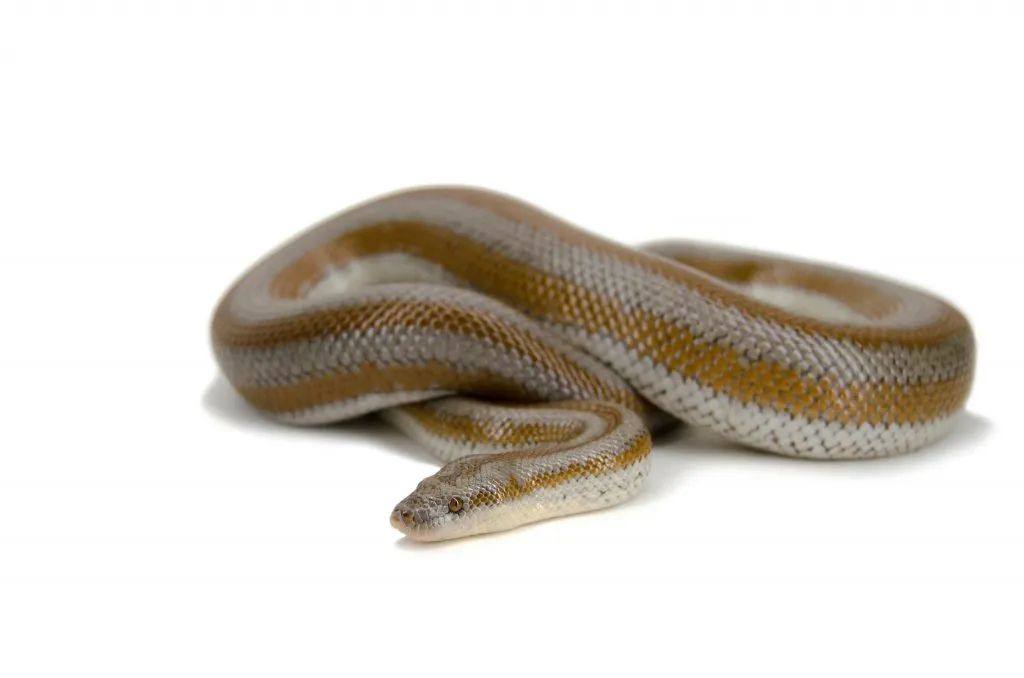
Rosy boas are some of the longest-living snakes when kept in captivity. Healthy boa snakes can easily reach thirty years or more, and some reptile enthusiasts have even shared that theirs lived over fifty years.
Corn snakes may not live as long but can still reach over twenty years if well-cared for. Whichever you eventually choose to keep, the long lifespan of snakes indicates that reptile keeping is a hobby that requires long-term dedication.
Husbandry Requirements
Both snakes require the standard terrarium setup – a proper enclosure, heating and thermal gradient, a basking area with UVB lighting, a hiding area, and a watering dish.
However, for each snake, there are some particularities to note.
As mentioned earlier, corn snakes should be housed in a larger, taller enclosure because they grow much longer upon maturity.
A wide, shallow water dish should also be provided for the corn snake to allow it to soak its body in.
The temperature gradient suitable for rosy boas and corn snakes varies slightly.
Corn snakes need a temperature gradient of 70°F to 85°F with a basking area of 88-92°F, whereas Rosy boas need a temperature gradient of 65°F to 85°F with a basking area of 89-95°F.
This may be a concern for beginners who live in much colder or warmer states. A temperature control device is very useful in regulating the appropriate temperature range.
Nature of Defense
Although both snakes rarely bite, they employ several defense mechanisms and exhibit certain behavioral signals when they feel stressed or threatened. Proper handling techniques should always be observed.
The rosy boa would usually curl up into a tight ball with the head in the center. It can also release a foul-smelling musk from its tail when it feels threatened.
The corn snake also employs musking or defecating, as well as hissing, tail shaking, and striking.
Common Health Problems
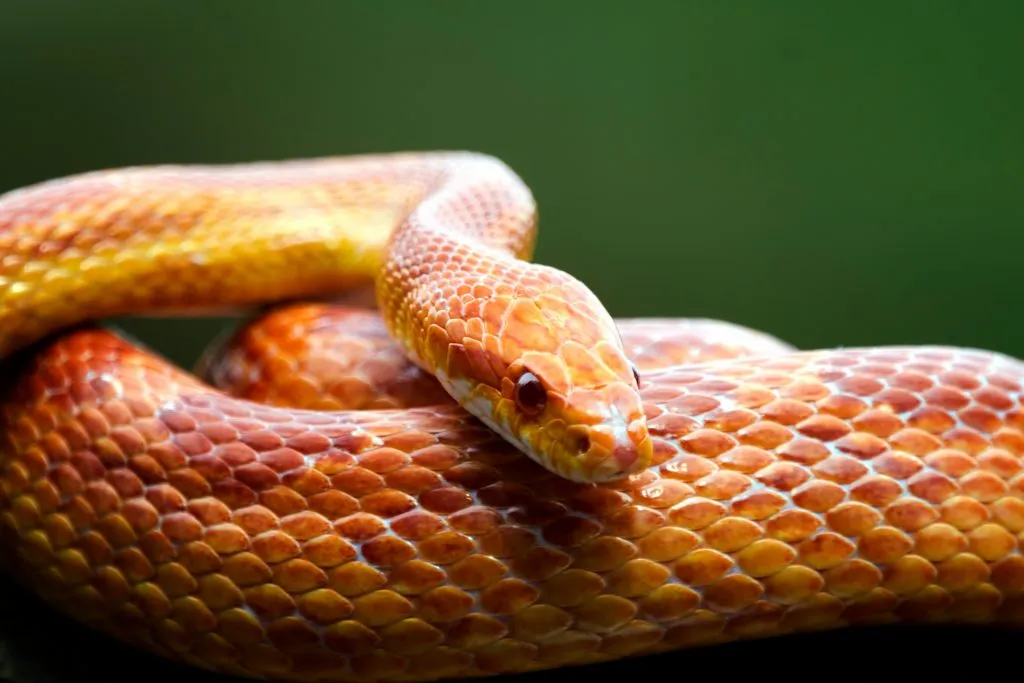
Although rosy boas and corn snakes are generally hardy reptiles, they can still get sick, especially from unsanitary housing conditions.
Both species are prone to respiratory problems, skin problems, and mouth rot, often caused by bacteria or fungi.
Rosy boas are particularly prone to inclusion body disease, a severe and contagious viral disease of the brain that causes death.
To avoid this, it is important to get your snakes only from reputable breeders.
Which Snake Suits You Better?
In conclusion, both rosy boas and corn snakes are great options for beginner reptile owners. The choice ultimately comes down to personal preference.
Rosy boas are perfect for those with limited space and a love for low-maintenance beauty, while corn snakes suit those who love variety and interactivity.
Regardless of which species you choose, make sure to research their specific care requirements and be prepared to provide a safe and healthy environment for your new pet.
- Enchi Ball Python: A Unique and Stunning Morph of Python regius - March 27, 2025
- Emerald Tree Monitor: The Enigmatic Green Guardian of the Rainforest - March 26, 2025
- The Egyptian Cobra (Naja haje): A Fascinating Serpent - March 25, 2025
